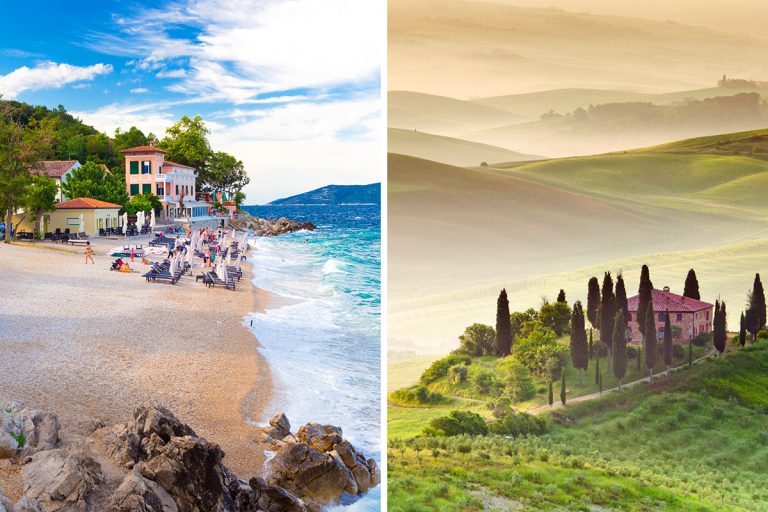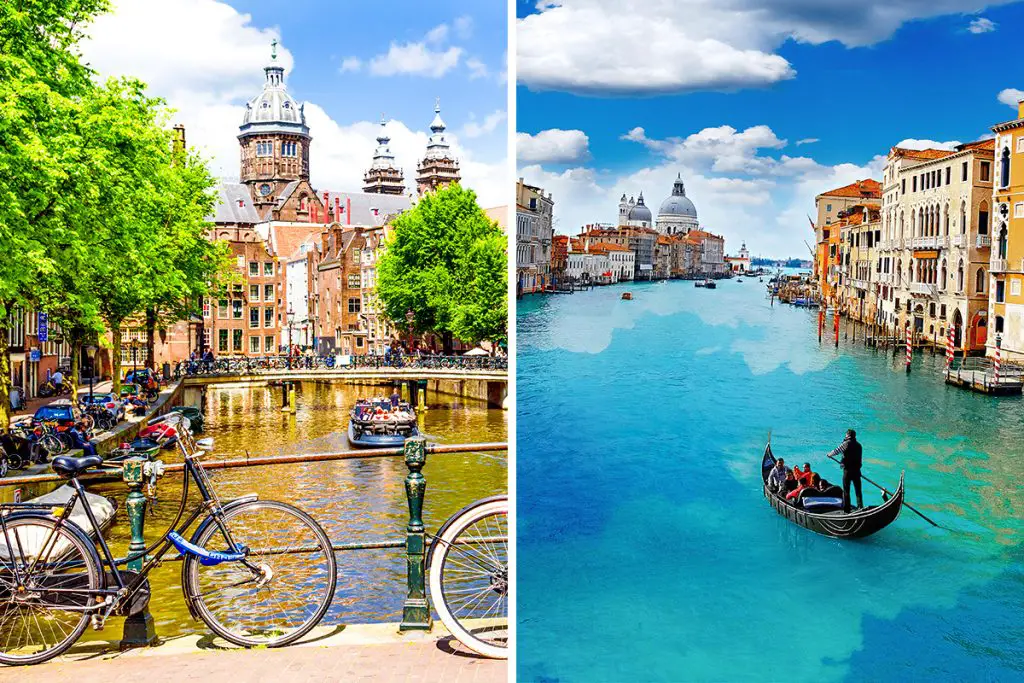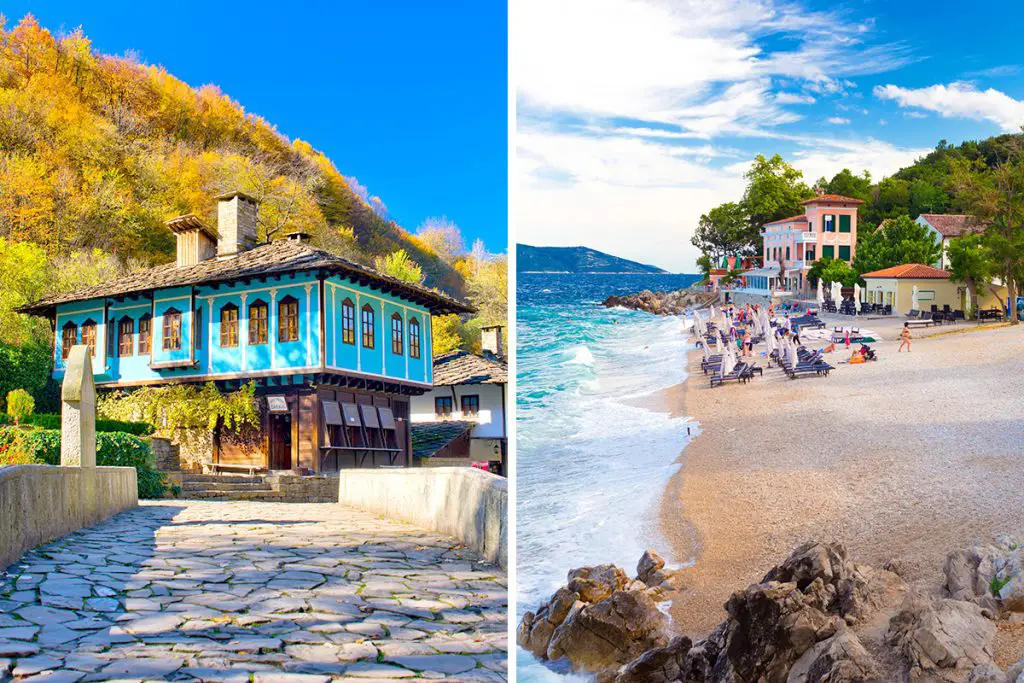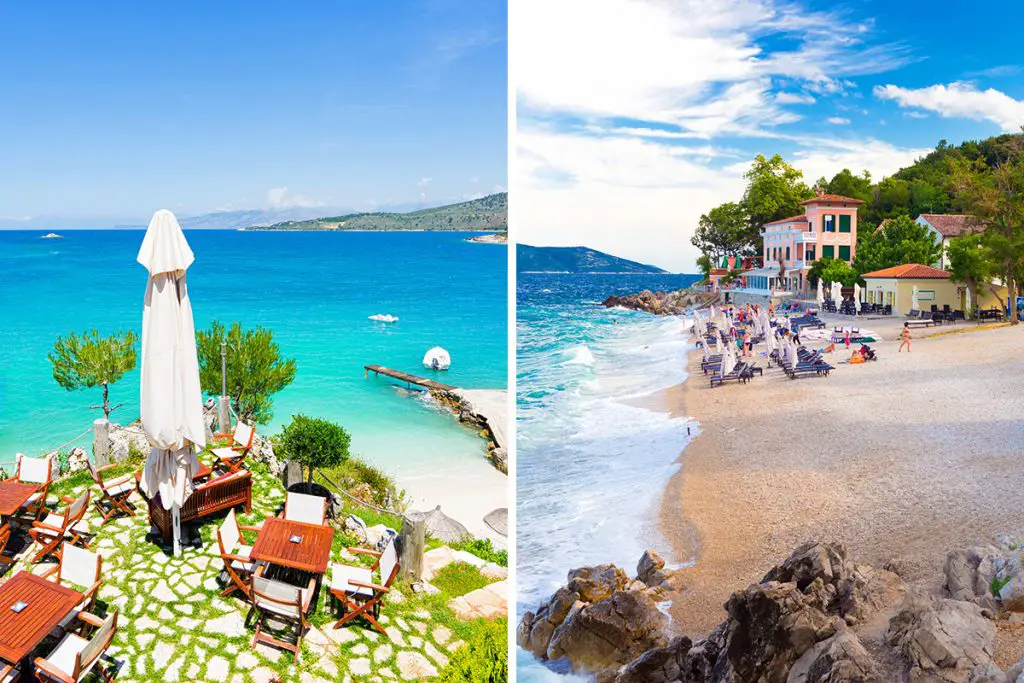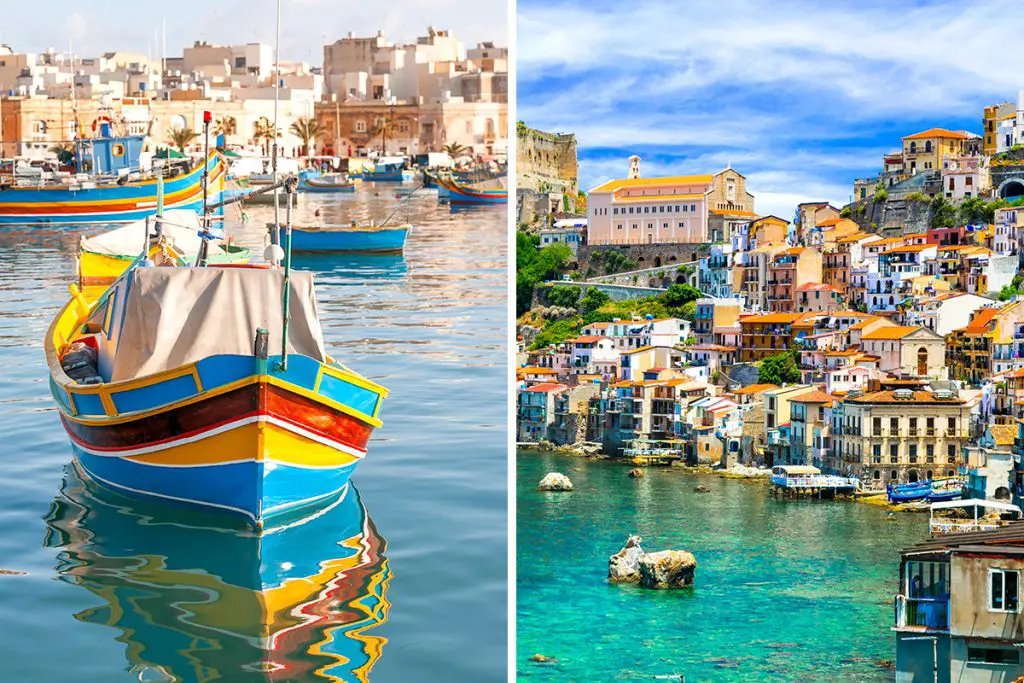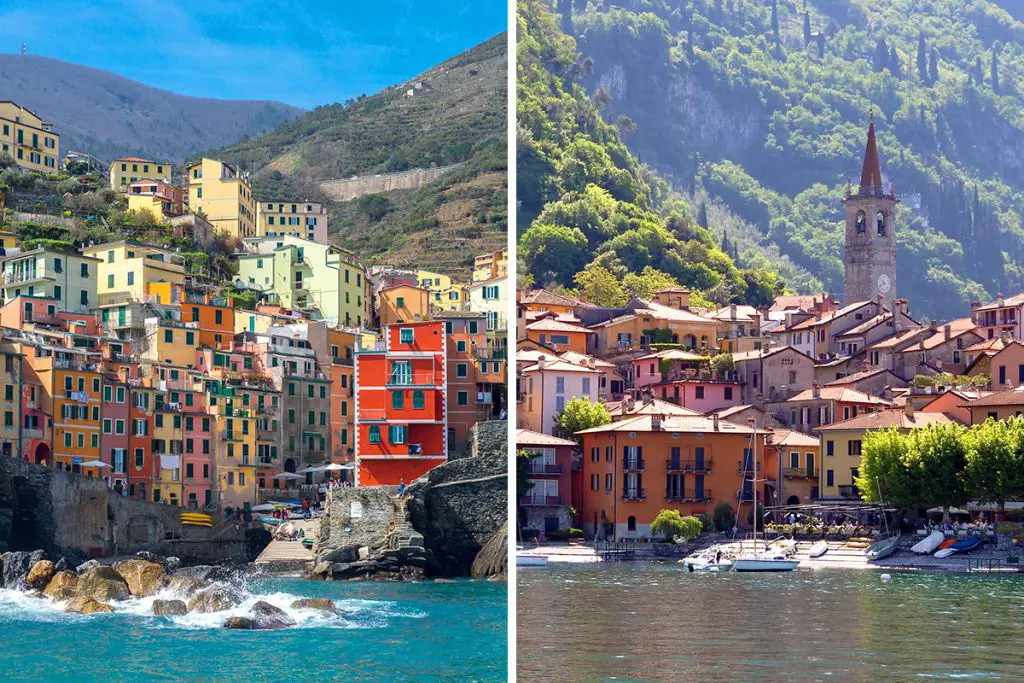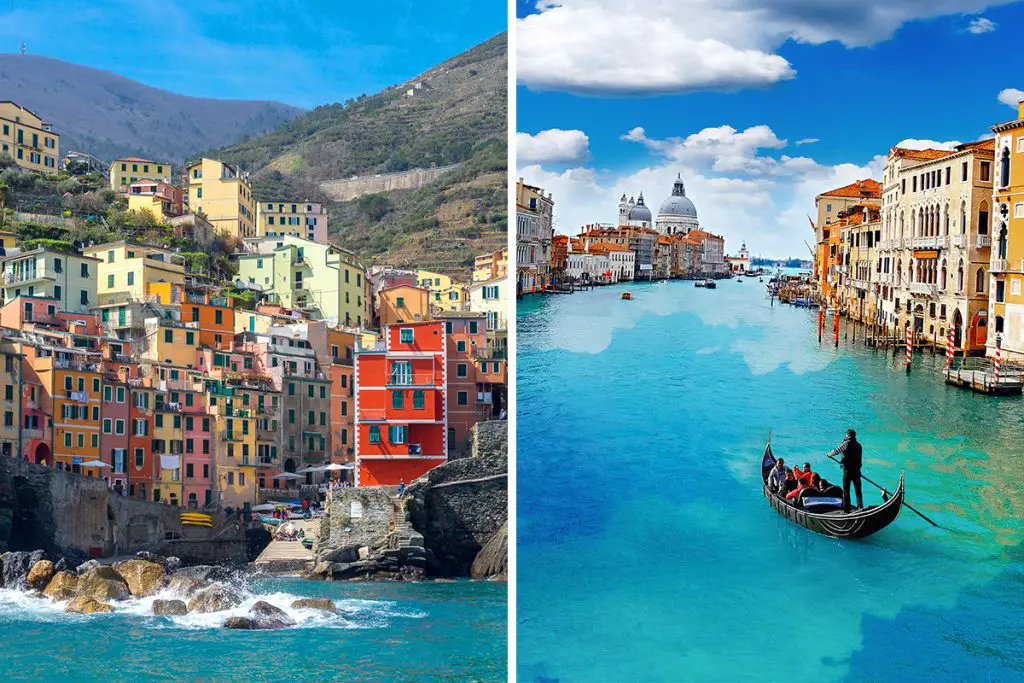Both Croatia and Italy have their unique charms that appeal to travelers of all ages and interests. Whether you’re an adventure seeker, a history buff, or a foodie, these destinations have something for everyone. So, how do you decide? Keep reading to discover the highlights of each country and find out which one is the perfect fit for your dream vacation.
History & Culture
Diving into the history and culture of Croatia and Italy promises a fascinating experience. Each country boasts a unique past that shaped its present-day allure.
In Croatia, you’ll discover remnants of ancient civilizations. The country’s rich tapestry of history weaves together influences from the Romans, Byzantines, and Venetians. Immerse yourself in Croatia’s vibrant culture, where traditions blend harmoniously with modern life.
On the other hand, Italy’s history is legendary. From the Roman Empire to the Renaissance, Italy has been a cultural powerhouse for centuries. Italy’s culture is renowned for its art, architecture, and style, leaving you awestruck by its beauty.
Croatian art and architecture reveal a blend of styles. Gothic, Renaissance, and Baroque elements are visible in the country’s historic buildings. Croatia’s folk traditions, like traditional music and dance, offer an authentic glimpse into local culture.
Italy’s art and architecture are world-famous. Masterpieces by Michelangelo, Leonardo da Vinci, and Botticelli adorn galleries and churches. Iconic structures, like the Colosseum and the Leaning Tower of Pisa, symbolize Italy’s architectural prowess.
Language is an important aspect of cultural identity. Croatian, the official language of Croatia, uses the Latin alphabet with special characters. Many people in Croatia speak English, making it easy for you to communicate.
In Italy, the official language is Italian. It’s a beautiful, melodic language, derived from Latin. While English is also spoken in tourist areas, learning a few Italian phrases can enrich your experience.
Both Croatia and Italy have strong ties to religion. In Croatia, the majority of the population identifies as Roman Catholic. Religious customs and celebrations are a significant part of local life.
Similarly, Italy is predominantly Roman Catholic. The Vatican, the seat of the Catholic Church, is located in Rome. Religious heritage is deeply woven into Italian culture and traditions.
Overall, history and culture enthusiasts will find plenty to explore in both Croatia and Italy. Each country offers a distinct cultural experience, steeped in history and tradition. Which destination will ignite your passion for the past?
Attractions & Activities
Croatia and Italy both offer unforgettable attractions and activities for visitors. You’ll find countless ways to make lasting memories in these remarkable destinations.
Croatia is known for its breathtaking national parks. Plitvice Lakes National Park enchants you with its cascading waterfalls and turquoise lakes. Hiking and walking trails allow you to explore this natural wonderland.
Italy’s stunning countryside features vineyards and rolling hills. Tuscany, a region famous for its wine, invites you to tour vineyards and sample local vintages. Horseback riding through the picturesque landscape is another popular activity.
History buffs will adore Croatia’s ancient sites. Diocletian’s Palace in Split showcases well-preserved Roman architecture. The walled city of Dubrovnik takes you back in time as you wander its cobblestone streets.
Italy’s historical attractions are legendary. Rome’s Colosseum and Forum take you on a journey to the days of the Roman Empire. In Florence, the Uffizi Gallery houses masterpieces by Renaissance artists, like Botticelli and da Vinci.
Outdoor enthusiasts will find plenty to do in Croatia. You can kayak along the Dalmatian Coast, exploring hidden coves and caves. Adventure seekers may enjoy ziplining in Omis, an adrenaline-pumping experience above the Cetina River canyon.
The Italian Dolomites offer thrilling outdoor activities. You can hike or mountain bike in the summer, while the winter season beckons skiers and snowboarders. The breathtaking scenery of the mountains serves as a stunning backdrop.
Croatia’s cultural attractions include the Pula Arena, a well-preserved Roman amphitheater. In Zagreb, the quirky Museum of Broken Relationships displays mementos from failed romances, offering a unique perspective on love and loss.
Italy’s iconic landmarks are must-see attractions. The Leaning Tower of Pisa and the Roman Pantheon captivate visitors with their architectural marvels. Venice’s canals and gondola rides are an essential part of any Italian vacation.
In Croatia, you can take a scenic bike ride along the Istrian Peninsula. The charming villages and picturesque coastline make for an unforgettable cycling adventure. The region’s truffle hunting is another exciting and unique activity.
Italy’s Amalfi Coast offers breathtaking coastal drives. The winding roads reveal dramatic cliffside vistas and enchanting seaside towns. You can also hike the ancient footpaths that connect the villages, like the famous Path of the Gods.
In conclusion, both Croatia and Italy provide a wide array of attractions and activities to suit every traveler’s taste. Whether you’re seeking adventure, history, or natural beauty, these destinations have something for everyone. The choice is yours: where will your journey take you?
Beaches
Sun, sand, and surf await you at the stunning beaches of Croatia and Italy. Both countries boast incredible coastlines that make beach lovers swoon.
Croatia’s coastline stretches over 3,600 miles (5,800 kilometers). Along this extensive shoreline, you’ll find pebble and sandy beaches, perfect for sunbathing, swimming, and watersports. The water is crystal clear, making it ideal for snorkeling and diving.
Italy’s coastline spans 4,660 miles (7,500 kilometers), offering diverse beach experiences. From sandy shores to rocky cliffs, Italy’s beaches cater to all preferences. Some beaches are famous for their vibrant beach clubs, while others offer secluded tranquility.
Croatia’s most famous beach is Zlatni Rat, located on the island of Brač. This unique, horn-shaped beach changes its shape due to currents and winds. Its turquoise waters and white pebbles create a picturesque setting for a day at the beach.
In Italy, the renowned Spiaggia dei Conigli on the island of Lampedusa ranks among the world’s most beautiful beaches. Its powdery white sand, azure waters, and protected cove make it a beach lover’s paradise. It’s also a nesting site for sea turtles.
Croatia’s islands, like Hvar and Vis, are home to hidden beaches and coves. You can explore these secluded spots by boat, discovering unspoiled natural beauty. The Pakleni Islands, a short boat ride from Hvar, feature idyllic beaches and crystal-clear waters.
Italy’s Sardinia Island is famous for its stunning beaches, like Cala Goloritzé and La Pelosa. With their white sand, dramatic rock formations, and turquoise waters, these beaches are true gems of the Mediterranean.
In summary, both Croatia and Italy offer an abundance of beautiful beaches, each with its own unique charm. Whether you prefer pebble or sandy shores, vibrant beach scenes, or secluded coves, you’re sure to find your perfect beach getaway in either destination. The choice is in your hands: where will you soak up the sun?
Eating, Drinking & Nightlife
Croatia and Italy offer a feast for the senses with their delicious cuisine, local drinks, and vibrant nightlife. Get ready to indulge in the culinary delights and entertainment of these European gems.
In Croatia, you’ll savor Mediterranean flavors infused with local ingredients. Fresh seafood, like fish, mussels, and oysters, is a highlight. The aromatic truffles of Istria are a must-try for food lovers.
Italy’s cuisine is world-famous for its incredible variety and regional specialties. You’ll indulge in pasta, pizza, and gelato. Don’t miss the chance to try local dishes, like risotto in Milan or osso buco in Rome.
Croatian wines, like Plavac Mali and Malvazija, are gaining international acclaim. You can visit wineries, tasting their exceptional vintages. Croatia also produces rakija, a fruit brandy that packs a punch.
Italian wines, like Chianti and Barolo, are celebrated worldwide. Wine tasting in Tuscany or Piedmont is an unforgettable experience. Limoncello, a zesty lemon liqueur, is a delicious Italian digestif.
Nightlife in Croatia varies from relaxed bars to lively clubs. Dubrovnik and Split offer an energetic scene, with open-air clubs and beach bars. Hvar is known for its upscale nightlife and exclusive venues.
Italy’s nightlife is diverse, from laid-back wine bars to bustling nightclubs. Rome and Milan feature stylish clubs, while Florence and Bologna offer a more relaxed vibe. Summer nights in coastal towns like Positano are perfect for sipping cocktails by the sea.
In conclusion, both Croatia and Italy promise a delightful culinary and nightlife experience. Each destination has its unique flavors, drinks, and entertainment options. Whether you’re a foodie, a wine lover, or a night owl, you’ll find plenty to enjoy in these captivating countries. The choice is yours: where will you indulge your senses?
Shopping
Shopaholics, rejoice! Both Croatia and Italy offer fantastic shopping experiences that cater to every taste and budget. Discover unique souvenirs, stylish clothing, and local crafts in these European hotspots.
Croatia’s shopping scene combines charming boutiques, open-air markets, and modern malls. In cities like Zagreb and Split, you’ll find a mix of local designers and international brands. Handmade items, like traditional lace and ceramics, make for memorable souvenirs.
Italy is a shopping paradise, renowned for its high-quality leather goods, designer fashion, and exquisite craftsmanship. Milan, the fashion capital, is home to upscale boutiques and luxury brands. Rome and Florence also offer fantastic shopping opportunities.
In Croatian markets, you can browse for fresh produce, local delicacies, and artisan crafts. The Dolac Market in Zagreb is a lively spot, where you can find everything from fresh cheese to handmade jewelry. Coastal towns often host charming evening markets, perfect for a leisurely stroll.
Italy’s markets are a treasure trove of local goods and regional specialties. The famous San Lorenzo Market in Florence offers leather products, while Rome’s Campo de’ Fiori is known for its bustling food market. Venice’s Rialto Market is a must-visit for its colorful array of fresh produce and seafood.
Croatia’s shopping malls provide a modern shopping experience. In Zagreb, Arena Centar and City Center One cater to a variety of tastes and budgets. Smaller towns also have shopping centers, where you can find clothing, accessories, and electronics.
Italy’s shopping centers, like Milan’s Galleria Vittorio Emanuele II and Rome’s Euroma2, offer a mix of high-end fashion and popular brands. These elegant shopping venues are as much about the experience as they are about the merchandise.
In conclusion, both Croatia and Italy offer fantastic shopping experiences for every type of traveler. Whether you’re seeking local crafts, designer fashion, or bustling markets, you’re sure to find the perfect shopping adventure in these captivating destinations. The choice is yours: where will you shop until you drop?
Accommodation
Finding the perfect place to rest your head is an essential part of any trip. Both Croatia and Italy offer a wide range of accommodation options, catering to different preferences and budgets.
Croatia has a diverse selection of lodgings, from luxury hotels to charming guesthouses. In cities like Dubrovnik and Split, you’ll find upscale resorts with stunning views. Smaller towns offer cozy bed and breakfasts or family-run apartments.
Italy’s accommodation choices are equally varied, featuring luxurious hotels, boutique properties, and historic villas. Rome and Florence are known for their elegant hotels, while Venice’s palazzos and gondola-filled canals create a unique stay.
Croatian holiday rentals, such as villas and apartments, provide a home-away-from-home experience. These options are popular on islands like Hvar and Korčula, where you can enjoy the comforts of a fully-equipped space.
In Italy, vacation rentals are also popular, offering a local living experience in charming apartments or countryside villas. The rolling hills of Tuscany and the scenic Amalfi Coast are perfect for a villa stay with family or friends.
In conclusion, both Croatia and Italy provide a wide array of accommodation choices to suit every traveler’s needs. Whether you prefer luxurious hotels, cozy guesthouses, or spacious vacation rentals, you’re sure to find your ideal lodging in either destination. The choice is yours: where will you lay your head at night?
Family-Friendliness & Children’s Activities
Planning a family vacation can be a challenge, but both Croatia and Italy offer fantastic destinations that cater to families and provide memorable experiences for children. Discover the joys of these European gems with your little ones in tow.
Croatia is a family-friendly destination, with stunning beaches and crystal-clear waters. Kids will love building sandcastles, splashing in the sea, and exploring hidden coves. Many beaches have shallow waters, making them perfect for young swimmers.
Italy’s coastline also boasts beautiful beaches that are ideal for families. The shallow waters of the Adriatic coast make it a favorite for young children, while the picturesque Amalfi Coast offers a mix of sandy and pebble beaches.
In Croatia, national parks like Plitvice Lakes and Krka offer an exciting adventure for the whole family. Children will be captivated by the cascading waterfalls, lush forests, and scenic boardwalks. Interactive museums and ancient ruins also provide educational fun.
Italy has numerous historical sites and museums that cater to children, like the Colosseum in Rome and the Uffizi Gallery in Florence. Interactive exhibits and guided tours keep young minds engaged and entertained.
Croatia’s family-friendly attractions include zoos, aquariums, and theme parks. The Dubrovnik Aquarium and Marine Research Center is a popular spot, while the adrenaline-pumping rides at Zagreb’s Dinopark Funtana are a hit with older kids.
Italy offers amusement parks, like Gardaland and Mirabilandia, that cater to all ages. Rome’s Bioparco, a large zoological garden, is a perfect day out for animal-loving children. Additionally, Venice’s gondola rides are a fun experience for the whole family.
In conclusion, both Croatia and Italy provide fantastic family-friendly destinations, offering a mix of beautiful beaches, exciting attractions, and engaging activities for children. No matter which country you choose, your family is sure to create lasting memories in these enchanting European locales. The choice is yours: where will you embark on your next family adventure?
Getting There & Getting Around
Traveling to and exploring Croatia and Italy is an exciting experience, but it’s essential to know the best ways to get there and navigate these picturesque destinations. Discover the most efficient methods for reaching and traversing these European gems.
Croatia is well-connected by air, with international airports in cities like Zagreb, Split, and Dubrovnik. Direct flights from major European cities are common, while connecting flights are available from other continents. Flight durations vary, but from London, it takes around 2 hours and 30 minutes (1,556 kilometers or 967 miles).
Italy also offers excellent air connections, with major international airports in Rome, Milan, and Venice. Direct flights from European cities and connecting flights from other continents make Italy easily accessible. A flight from London to Rome takes approximately 2 hours and 30 minutes (1,442 kilometers or 896 miles).
Once you’ve arrived in Croatia, getting around is relatively simple. Buses are the most popular and affordable mode of transportation, connecting cities and towns across the country. Car rentals are also available, providing flexibility and convenience for exploring at your own pace.
In Italy, the extensive train network is an efficient way to travel between cities and regions. High-speed trains, like the Frecciarossa, connect major cities in just a few hours. Car rentals are another option, but be prepared for busy traffic in popular tourist areas.
Croatian cities and towns are often best explored on foot, allowing you to take in the stunning architecture and vibrant atmosphere. In coastal areas, ferries and catamarans connect the islands, making island-hopping a breeze.
Italy’s cities, like Rome, Florence, and Venice, are also very walkable, with most attractions located within a compact area. For longer distances, public transportation options, like buses and trams, are available. In Venice, water taxis and vaporettos (water buses) are the primary means of transportation.
In conclusion, both Croatia and Italy offer convenient ways to get there and explore their beautiful landscapes and historic cities. Whether you prefer traveling by air, bus, train, or car, you’ll find a transportation method that suits your needs and preferences. The choice is yours: where will your European adventure take you?
Weather
When planning a trip to Croatia or Italy, it’s important to consider the weather, as it can significantly impact your travel experience. Discover the climate differences between these two Mediterranean destinations.
Croatia enjoys a Mediterranean climate along its coastline, with hot, dry summers and mild, wet winters. Average summer temperatures range from 75°F to 86°F (24°C to 30°C), while winter temperatures hover around 39°F to 48°F (4°C to 9°C).
Italy also experiences a Mediterranean climate in its coastal regions, with warm summers and cool, wet winters. Summer temperatures in popular destinations like Rome and Florence average 75°F to 90°F (24°C to 32°C), while winter temperatures range from 39°F to 53°F (4°C to 12°C).
In Croatia, the best time to visit is between May and September, when the weather is warm and sunny, perfect for enjoying the beaches and outdoor activities. However, July and August can be quite crowded with tourists.
Italy’s peak tourist season is also between May and September, with pleasant weather for sightseeing and relaxing on the beaches. Keep in mind that July and August are the hottest and busiest months, so plan accordingly.
In conclusion, both Croatia and Italy offer delightful weather for travelers seeking the warmth and sunshine of the Mediterranean. Consider your travel preferences and desired activities when choosing the perfect time to visit these stunning European destinations.
Safety
When traveling to new destinations, it’s essential to consider your safety and well-being. Explore the safety aspects of visiting Croatia and Italy, and learn how to make your trip enjoyable and worry-free.
Croatia is generally a safe destination for tourists, with low crime rates and a welcoming atmosphere. Petty crimes, like pickpocketing and purse-snatching, can occur in crowded tourist areas, so it’s crucial to stay vigilant and keep your belongings secure.
Italy, like Croatia, is considered a safe country for travelers. However, pickpocketing and other petty crimes can be more prevalent in popular tourist spots, such as Rome and Venice. Keep an eye on your belongings, especially in crowded places.
In Croatia, natural hazards can include forest fires during the hot, dry summer months. Be aware of local weather conditions and follow any safety guidelines provided by authorities.
Italy is known for its occasional earthquakes and volcanic activity, particularly around Mount Vesuvius and Mount Etna. Stay informed about any potential natural hazards and follow the advice of local officials.
In conclusion, both Croatia and Italy are generally safe destinations for travelers. Practice common-sense precautions to protect yourself from petty crimes, and stay aware of any natural hazards that may arise. Enjoy your journey knowing that your safety is a priority in these beautiful European countries.
Cost
Budgeting for your vacation is essential, and comparing the costs of visiting Croatia and Italy can help you make an informed decision. Discover the differences in expenses between these two popular European destinations.
Croatia, as a popular tourist spot, offers various price points for travelers. On average, you can expect to spend around 500 HRK ($75) per day on meals, transportation, and attractions. Accommodation costs vary, but mid-range options typically cost about 600 HRK ($90) per night.
Italy, known for its rich history and renowned cuisine, can be more expensive than Croatia. Daily expenses, including meals, transportation, and attractions, can average around €80 ($95). Mid-range accommodations in Italy are generally priced at €100 ($120) per night or more.
While dining out in Croatia, you can enjoy a delicious meal at a mid-range restaurant for approximately 200 HRK ($30). In Italy, a similar dining experience may cost you around €40 ($48).
Attraction prices vary in both countries, but Croatia tends to be more affordable. For example, a popular tourist site in Croatia might charge 100 HRK ($15) for entry, while a similar attraction in Italy could cost €15 ($18).
In conclusion, both Croatia and Italy offer unforgettable experiences, but Croatia tends to be more budget-friendly. Consider your personal travel preferences and financial situation when deciding which Mediterranean gem to explore.
Which Is Better – Croatia or Italy?
Both Croatia and Italy have their own unique appeal, and your choice between the two depends on your preferences and priorities. Reflect on the differences between these destinations, and consider which one best suits your interests.
For history and culture enthusiasts, Croatia offers a blend of diverse influences, while Italy is a treasure trove of ancient art and architecture. If you’re passionate about exploring the past, Italy might be the better choice for you.
When it comes to attractions and activities, Croatia boasts stunning natural beauty and outdoor adventures, while Italy offers world-famous landmarks and museums. If you prefer outdoor activities, Croatia could be the winner, but if you’re an art lover, Italy might steal your heart.
Beach lovers will appreciate Croatia’s pristine shores and crystal-clear waters, while Italy’s coastline features both pebble and sandy beaches with a warmer Mediterranean climate. Choose Croatia for a serene beach experience, or opt for Italy if you’re after a more vibrant atmosphere.
In terms of eating, drinking, and nightlife, Italy is renowned for its gastronomy and lively social scene. Croatia, on the other hand, provides a more laid-back vibe with delicious, affordable food. If you’re a foodie who enjoys a bustling nightlife, Italy may be the right choice.
Shopping in Croatia offers unique, locally made goods and crafts, while Italy boasts high-end fashion and luxury brands. If you’re a bargain hunter, you might prefer Croatia, but if you’re seeking designer items, Italy could be your shopping paradise.
Family-friendliness and children’s activities are abundant in both countries, but Croatia might have an edge with its variety of kid-friendly attractions and outdoor activities. Italy is also a great choice for families, offering many cultural and educational experiences.
Considering transportation, both Croatia and Italy have well-developed infrastructure for tourists. The choice between the two will depend on your preferred mode of transport and budget.
Weather-wise, Croatia has a pleasant Mediterranean climate, while Italy boasts warmer temperatures and diverse regional climates. Base your decision on your preferred weather conditions and seasonal factors.
Safety is important for all travelers, and both Croatia and Italy are considered relatively safe destinations. Be mindful of your surroundings and follow local guidelines in either country.
Finally, when it comes to cost, Croatia is generally more budget-friendly than Italy. If you’re looking for a more affordable vacation, Croatia could be the better choice.
In conclusion, choosing between Croatia and Italy ultimately depends on your personal preferences, interests, and budget. Both countries offer unforgettable experiences, so you can’t go wrong with either destination.

